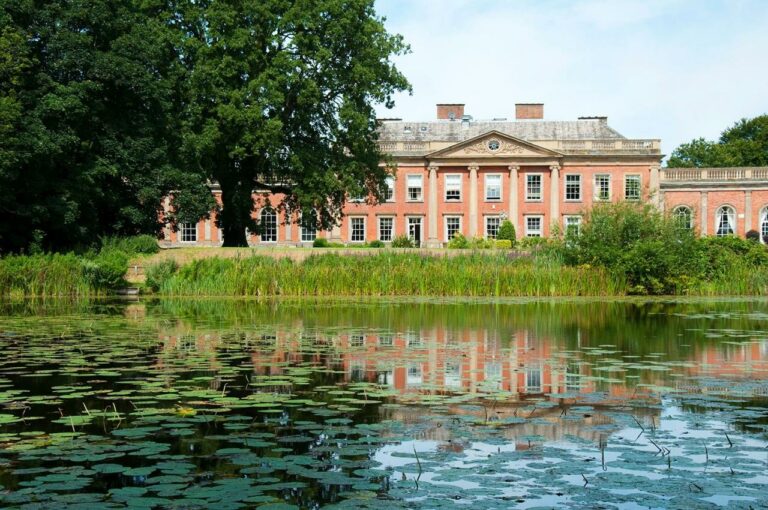Brewery Experience Day- Brewhouse & Kitchen
Masterclasses are quite obviously on trend at the moment and due to their vast array of themes they are also extremely popular group activities to undertake- gin making/cocktail making/flower arranging you name it there’s a masterclass for it, all making for perfect team building or celebratory activities to entertain all ages and demographics.
Brewhouse & Kitchen do these very well I recently learnt, as I discovered the Brewery Experience Days held in-house at their Nottingham venue…
Our group was made up of five altogether, but numbers differ depending on dates and how big your own group happens to be, though they can generally cater for large numbers. I went along with a friend of mine and so we were put together with another group of three who happened to be great fun, so it turned out to be a productive networking/friendship making experience too- bonus!
To take part in the experience you will need to commit the day to the love of beer as the timings are 10am-5pm, though you can shoot off a little earlier if you need to as the latter part is made up of mostly sitting around drinking.
I myself have never actually been a beer drinker, so you may ask why I went along… Honestly I love to try new things and get to the bottom of how things are made and so I was both excited and intrigued to take part.
Andy Moore our head brewer for the day bought us teas and coffees to wake us up first thing following a brief introduction of the day ahead- 8 beers were on offer throughout the day for us to look forward to trying, as well as breakfast, lunch and the chance to actually help brew the next batch which would be sold behind the bar.
We placed our breakfast orders (bacon butties for most and a hash brown and mushroom butty for me – yum!) We then had a tour of the brewery which is located just opposite the main bar in the venue. The copper drums are actually very attractive pieces to look at so not an eye sore at all like you may expect, but rather an addition to the beer themed pub/restaurant and throughout the day many people came over to have a sneek peek at what we were up to over the railings.
We realised very quickly that we were going to be required to roll our sleeves up and get stuck in and manual work it was too- at one point I felt the need to remove my jacket to give myself full movement and potential whilst using my spade to scoop out the malt from the drum into several sacks below- this was most certainly a two man/woman job; one to be chief ‘scooper’ and the other to hold the sack open so it didn’t spill all over the floor- my friend and I made a great team, as the others in the group watched on. What was great was that there were plenty of jobs for everyone to do, so no one went without some kind of on-hands experience, whether it was measuring or weighing ingredients, pouring in wheat/malt from the sacks into the drum or stirring and as it was just a team effort this is why I could plainly see this experience day as being perfect for team building and corporate away days.
Andy explained what ingredients were used to make beer and to make the beer and I asked how you get the different flavours – his response was that it is simply the ratio of ingredients you include and the temperature in which you brew it – this basically determines the strength of the beer as well as the taste.
The beer we were tasked to brew that day was called Tricky Tree (sold on their menu) at 5.5% described as bitter, citrusy and hoppy. Hops wasn’t the best smelling ingredient I have to say, in fact it was my least favourite out of the bunch, with malt being the clear winner in the group- reminding us of the popular bedtime drink-Horlicks.
Step By Step Guide To Brewing Beer
- Hot water (77c) from the HLT (Hot liquor tank) is mixed with the malted barley and speciality malts in the mash tun. After mixing well the grains are left to steep (for an hour) in about 68c water this activates the enzymes which turn the starch in the grain into simpler sugars for the yeast to consume later.
- After the grains have steeped for an hour a process called re-circulation takes place which draws the now named wort from the bottom of the mash tun back onto the top and the husks from the grain act as a natural filter, therefore making a clearer wort.
- The next process is called the sparge – this is where the wort from the mash tun is transferred into the copper (the boiling vessel) and at the same time the remaining liquor in the HLT is transferred on top of the mash (grain) to rinse the grains of any residual sugars.
- The boil – this is where we aim to balance out the sweet wort with bitterness from the hops and also where we add our hop flavours.
- The whirlpool – this is where centrifugal force pulls all the hop matter into the middle of the copper and therefore allows to run clearer wort from the side of the copper.
- Heat exchange – The wort is then transferred into a fermenter via the heat exchange, where the wort temperature drops from 90c+ down to 20c.
- The final job of the brew day is to add the yeast.
The last steps
- Fermentation – which will take about 4/5 days when the hops is added for dry hopping.
- The beer is then cold crashed to about 3/4c for 2 days to help drop out any sediment/yeast/hops.
- Packaging – the beer will be packaged into a keg and branded ready for sale.
Wheat, barley and ninety kilos of pale ale malt are added to the tank as the main ingredient as well as hops for flavour and something called carolite and yeast. This is then mixed together by hand initially which was pretty hard work as more ingredients were added the mixture became thicker and thicker- the automated system then takes over with the flick of a switch and you can leave it to do its thing for a while, whilst you enjoy more drinking time. Andy however did keep checking on the temperature and the tanks in general throughout the day to ensure everything was as it should be.
67/68 degrees was the perfect temperature to reach for our particular beer, however each one differs, depending on whether you are making beer, lager, stout etc.. each temperature wiill determine the strength and taste, as well as the hops.
We were kept hydrated throughout the day with drinks orders being taken (namely water/soft drinks/teas and coffees) and then various beer samples were placed in front of us at any given moment so we certainly never went without. We sampled an 1899 pale ale, Talladega beer, Old big head (named after Brian clough) and a fruit IPA with tropical notes in particular mango and this was strong at that being 7 percent. We sampled a stout with notes of chocolate and coffee and various others with a few extras thrown in for good measure – Andy really was a good sport. He was very knowledgeable about the industry and was on hand to answer any questions anyone had, being attentive throughout the entire day.
The final beer we tasted which we all really liked was actually brewed by a group of women in aid of International Women’s Day who were there on a previous beer experience day, which they named ‘raspberry whip’ because of its distinct sweet, raspberry flavour. This was most definitely my favourite one of the day.
Half way through the day after working up an appetite we were awarded lunch – again this was chosen by us from a nice selection on the menu- I opted for a healthy superfood salad and most others went for the burgers, which all looked great served in brioche buns with chips.
As a reward for all of our hard work , we received not only a certificate for our efforts, but a keg of our choice to take home with us- a really nice bonus and so I went for the Raspberry Whip as did my friend- a great addition to my next BBQ I think!
The Brewery Experience Days are held at Brewhouse & Kitchen venues across the country, are priced at £85 per person for a full day, 10am-5pm and include breakfast, lunch, 8 beers to sample, the chance to try brewing yourself and a certificate and keg to take home.
Fiona Duncan-Steer







